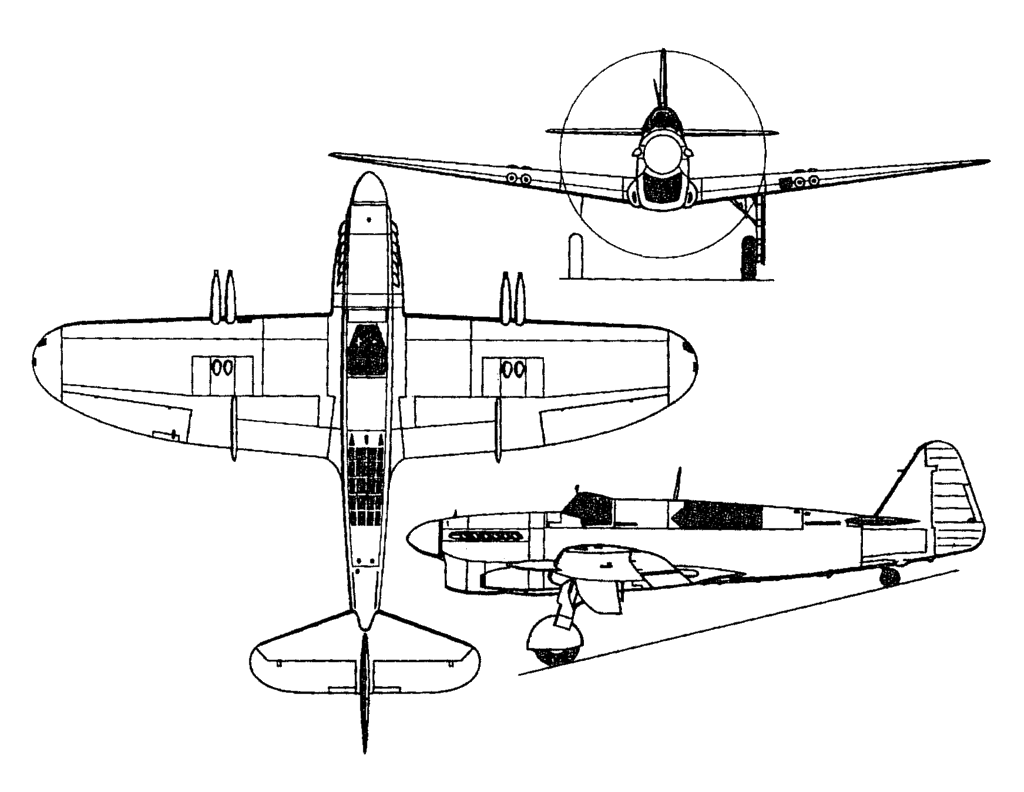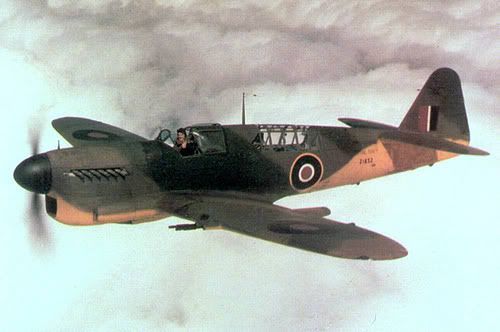and this little jewel...
The Firefly - which in its prototype form first flew on 22 December 1941 - was produced until the mid-1950s although most of the earlier operational versions remained in use with the Royal Navy, Royal Australian Navy and Royal Netherlands Navy. Reconditioned Firefly Is were also supplied to the air forces of Ethiopia and Siam during this period; while Firefly target tugs served in Sweden and Denmark.
The Firefly 1 was powered by a 1,483kW Rolls-Royce Griffon 2 or 12 engine driving a Rotol three-bladed propeller. The F.1 was the early two-seat day fighter and was followed by the FR.1 and 1A standard reconnaissance fighters (with search radar in a radome under the nose of the fuselage) and the NF.1 night fighter. Each was armed with two 20mm cannon in each wing. The Firefly T.1 was basically an F.1 converted for use as a deck-landing conversion and instrument-flying trainer. The raised rear cockpit was occupied by the instructor. They were usually unarmed, although a few carried two 20mm cannon.
The Firefly TT.1 was fitted for towing a glider, banner or sleeve target for ground-to-air or air-to-air firing practice. The Firefly T.2 was an armaments trainer, similar to the T.1 with two 20mm cannon and provision for carrying bombs, rockets and long-range drop tanks. The Griffon 12-powered Firefly T.3 was a version of the FR.1 intended specifically to train observers, the rear cockpit being equipped with the fullest possible range of radio and radar equipment. The Firefly FR.4 (first flown on 25 May 1945) was powered by a Griffon 74 engine driving a Rotol four-bladed propeller and had radiators moved from beneath the nose to leading-edge extensions of the centre-section. The wings were reduced in span and given square tips and the area of the tailfin was increased. Armament was the same as for the Firefly 1 but could also carry two 450kg bombs, 16 x 27kg rockets or eight heavier rockets, or long-range fuel tanks. A modified version for target-towing was the TT.4.
The similarly powered Firefly 5 was produced in three forms, as the NF, FR and AS, all similar externally to the 4. The FR.5 carried the same radar in the starboard wing nacelle as the 4 and was equipped with beam approach, IFF and communications radio. The NF.5 had the same basic radio plus a radio altimeter and other night-flying equipment. The AS.5 was an anti-submarine version and carried special submarine-detection equipment under the wings and fuselage. The Firefly AS.6 was another anti-submarine aircraft, structurally similar to the 5 but with different operational equipment and no defensive armament.
The Firefly 7 of 1953 was produced in two forms, as the AS and T, although it was used mainly as an anti-submarine training aircraft. Powered by a Griffon engine with a 'chin' radiator, the three-seat anti-submarine aircraft carried the latest detection devices and sonobuoys for tracking a target at sea. A new blister-enclosed rear cockpit accommodated two radar operators and the aircraft had elliptical wings without wing radiators and a new tail unit. The final Firefly variant was the U.8/U.9, designed as new or conversions of earlier aircraft to help with the development of guided missiles and equipped to be used as radio-controlled photographic drones.
Firefly fighters and reconnaissance fighters first went into operational service in late 1943 and were mainly used in the Pacific theatre of war against Japanese forces and targets. Successes on the Western Front included a reconnaissance over the German battleship Tirpitz which resulted in the bombing attack by Vought Corsairs and Barracudas on 3 April 1944. Post-war, Fireflies saw action in Korea, flying vast numbers of sorties from British and Australian aircraft carriers, and later in Malaya; finally going out of service in 1956. Firefly production totalled more than 1,700 aircraft of all variants.
Specification
CREW 2
ENGINE 1 x Rolls-Royce "Griffon IIB", 1270kW
WEIGHTS
Take-off weight 6400 kg 14110 lb
Empty weight 4420 kg 9744 lb
DIMENSIONS
Wingspan 13.6 m 45 ft 7 in
Length 11.5 m 38 ft 9 in
Height 4.1 m 13 ft 5 in
Wing area 30.7 m2 330.45 sq ft
PERFORMANCE
Max. speed 509 km/h 316 mph
Ceiling 8530 m 28000 ft
Range w/max.fuel 1720 km 1069 miles
ARMAMENT 4 x 20mm machine-guns, 900kg of bombs

